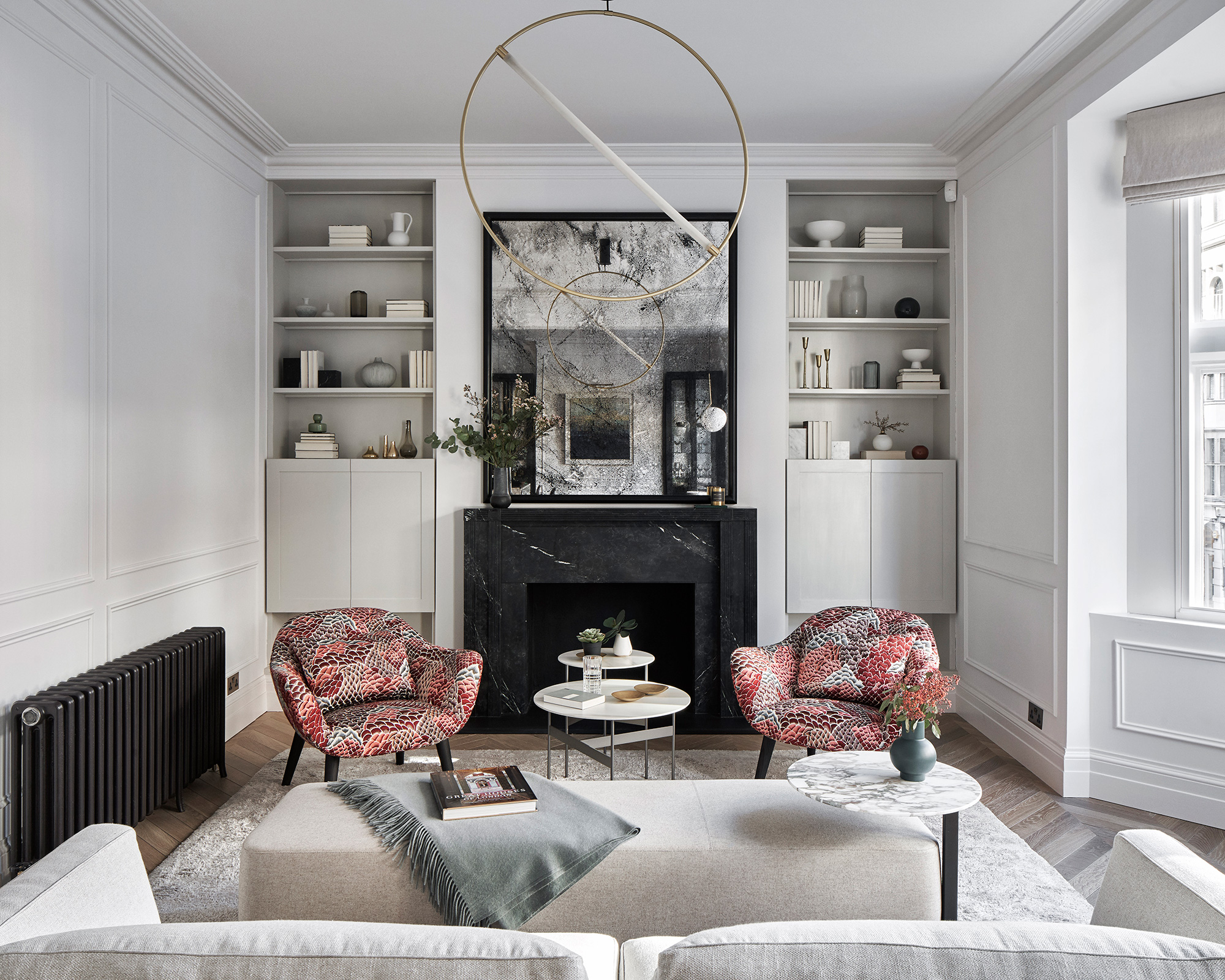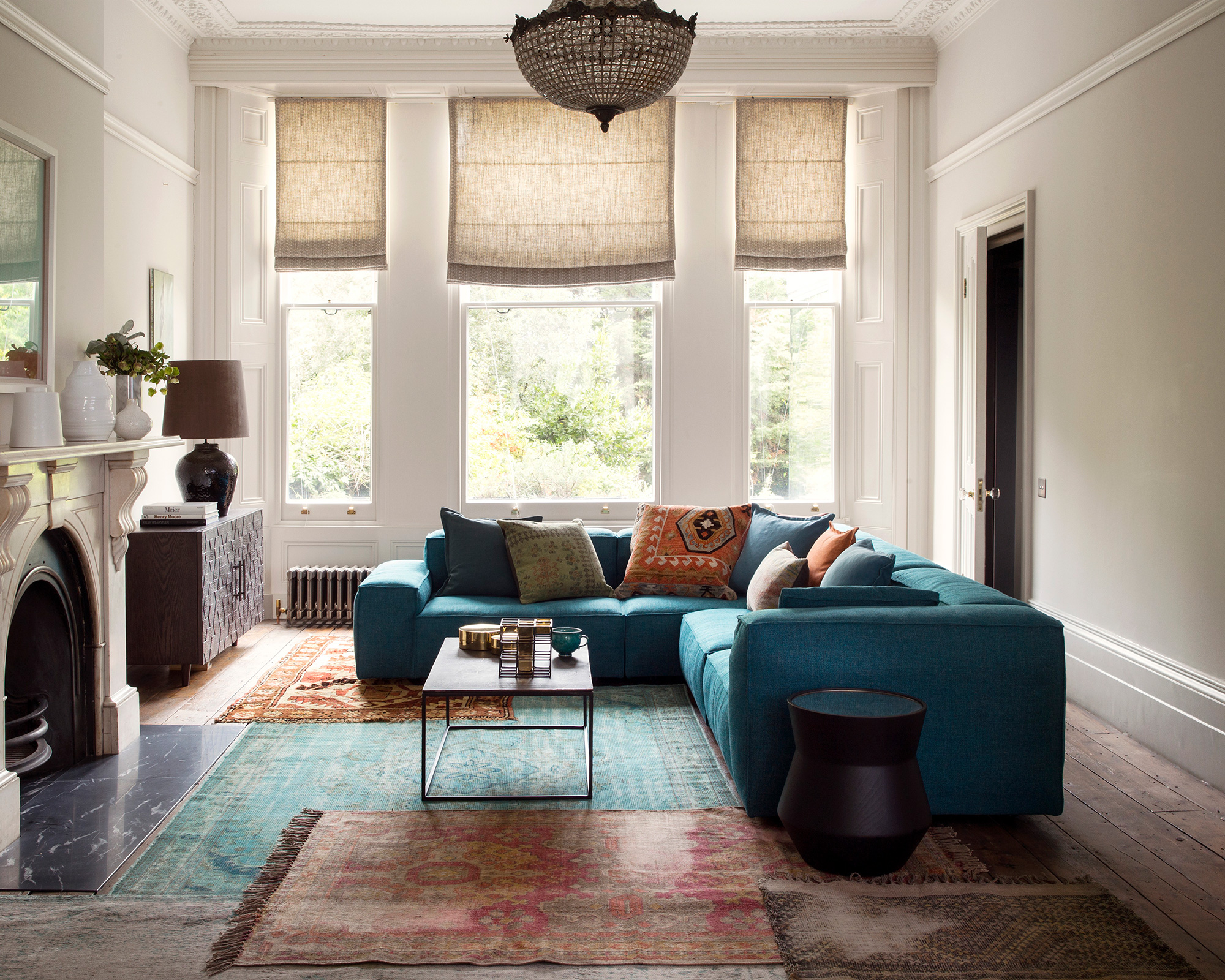An interior designer shares her favorite space-saving secrets
Homes that are short on space can still be big on style


The proud owners of compact city apartments, crash-pads, house boats and quaint country cottages know how to be clever with space, and such focused thinking can be good for any home, helping to streamline space and create optimum storage potential.
1. Enlarge the space

Pulling the furniture away from the walls, even by just a couple of inches, creates breathing space that will make your room appear more spacious – perfect when considering more compact apartment living room ideas.
2. Zone a larger room

Long thin rooms rarely feel homely, but there are tricks you can use to zone the space to make it feel far cozier. A rug can visually draw together the furniture in a space, giving a room focus and adding comfort.
3. Extend the eye

Use colors that are found in nature.
Moss and leaf green mixed with pale woods will bring the outside in and extend your room into the views through the windows.
4. Play with scale

Pattern can make a room feel smaller, but if you have your heart set on it, choose a fabric or wallpaper with a fine motif rather than anything too bold.
Using small-scale print such as tiny dots, or a ditsy floral on curtains and soft furnishings will help add depth to a neutral scheme.
Design expertise in your inbox – from inspiring decorating ideas and beautiful celebrity homes to practical gardening advice and shopping round-ups.
5. Match woodwork to walls

Make a room feel larger by painting the walls and woodwork in the same shade. If you're brave enough, paint the ceiling in a brighter shade as well to make the room feel taller.
Alternatively, create the illusion of higher ceilings by painting walls and floors, woodwork and even fireplaces all the same color, this provides a seamless space where your eyes are not stopped by a change in color, thus giving the illusion of more space.
6. Use reflection and shine

Not surprisingly, mirrors can make a room look a lot larger.
‘A mirror is an interior designer's best friend,’ says US-based interior designer, Gillian Segal. ‘Light will bounce around glass furniture and glossy surfaces, so lots of shiny and mirrored furniture and accessories will make a room feel larger.’
You can also try using a focal point and angle your mirrors towards it, which will give the illusion of depth.
Mirrors reflect both natural and artificial light to make a room brighter during the day and night and they bounce light deep into the room, making it appear larger.
Mirrors on the walls and glass tabletops will make it seem like there’s a more open flow. You can also use mirrored cabinet doors to make spaces feel large and uncluttered.
7. Style with stripes

Choose a striped wallpaper to create more space – a horizontal stripe will help widen a room and a vertical stripe will add height.
8. Direct traffic flow

In an open plan living space, pull the sofa away from the wall and use its back to create a hallway or dining area so traffic is directed behind a seating area rather than through it.
9. Make space for storage

Use the area behind a sofa or bed to add extra storage such as a shelving unit or chest of drawers, either up against the wall, or butted up to the back of the sofa or bed.
10. Invest in clever furniture

Even if you think there is no space for a dining table, there is always a solution.
Choose a fold-down wall-mounted style to turn a small patch of bare wall into a dining area that would work in even the most compact home.
11. Scale up and blend in

Select furniture pieces that are in proportion to the size of your room – oversize cabinets, couches and chairs can make a small room feel narrow.
Furniture that is the same color as your walls tends to blend into the wall, making it look wider and make sure you arrange your furniture at an angle to create a sense of depth to the room, otherwise if you place all furniture against the walls you might end up with a narrow ‘bowling alley’ look.

Jennifer is the Digital Editor at Homes & Gardens, bringing years of interiors experience across the US and UK. She has worked with leading publications, blending expertise in PR, marketing, social media, commercial strategy, and e-commerce. Jennifer has covered every corner of the home – curating projects from top interior designers, sourcing celebrity properties, reviewing appliances, and delivering timely news. Now, she channels her digital skills into shaping the world’s leading interiors website.